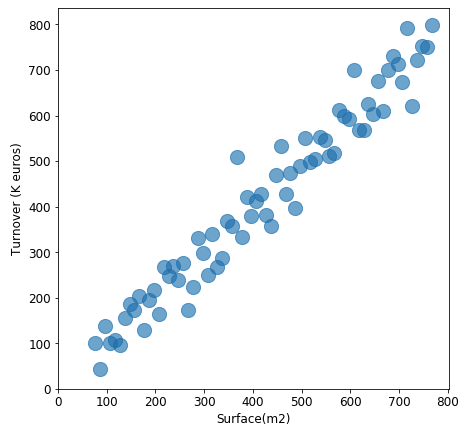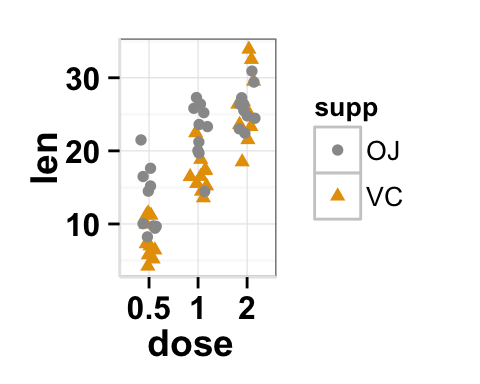

Handles =, , marker='o', color='w', markerfacecolor=v, label=k, markersize=8) for k, v in ems()]Īx.legend(title='color', handles=handles, bbox_to_anchor=(1.05, 1), loc='upper left')ĭf.map(colors) effectively maps the colors from "diamond" to "plotting". fig, ax = plt.subplots(figsize=(6, 6))Ĭolors = Īx.scatter(df, df, c=df.map(colors))
#Multiple series scatter plot ggplot2 code
The following code defines a colors dictionary to map the diamond colors to the plotting colors. You can pass plt.scatter a c argument, which allows you to select the colors. If your legend is that of a color attribute and it varies based in a factor, you need to set the name using scale_color_discrete(), where the color part belongs to the color attribute and the discrete because the legend is based on a factor variable.Imports and Sample DataFrame import matplotlib.pyplot as pltįrom matplotlib.lines import Line2D # for legend handleĬarat cut color clarity depth table price x y zĠ 0.23 Ideal E SI2 61.5 55.0 326 3.95 3.98 2.43ġ 0.21 Premium E SI1 59.8 61.0 326 3.89 3.84 2.31Ģ 0.23 Good E VS1 56.9 65.0 327 4.05 4.07 2.31

If you want to remove any of them, set it to element_blank() and it will vanish entirely.Īdjusting the legend title is a bit tricky. They need to be specified inside the element_text(). Adjusting the size of labels can be done using the theme() function by setting the plot.title, and. The ThemeĪlmost everything is set, except that we want to increase the size of the labels and change the legend title. Note: If you are showing a ggplot inside a function, you need to explicitly save it and then print using the print(gg), like we just did above. The plot’s main title is added and the X and Y axis labels capitalized. Gg <- ggplot(diamonds, aes( x=carat, y=price, color=cut)) + geom_point() + labs( title= "Scatterplot", x= "Carat", y= "Price") # add axis lables and plot title. However, no plot will be printed until you add the geom layers.

#Multiple series scatter plot ggplot2 how to
If you intend to add more layers later on, may be a bar chart on top of a line graph, you can specify the respective aesthetics when you add those layers.īelow, I show few examples of how to setup ggplot using in the diamonds dataset that comes with ggplot2 itself. The aesthetics specified here will be inherited by all the geom layers you will add subsequently. The variable based on which the color, size, shape and stroke should change can also be specified here itself. Optionally you can add whatever aesthetics you want to apply to your ggplot (inside aes() argument) - such as X and Y axis by specifying the respective variables from the dataset.

Unlike base graphics, ggplot doesn’t take vectors as arguments. This is done using the ggplot(df) function, where df is a dataframe that contains all features needed to make the plot. The Setupįirst, you need to tell ggplot what dataset to use. The process of making any ggplot is as follows. The distinctive feature of the ggplot2 framework is the way you make plots through adding ‘layers’.


 0 kommentar(er)
0 kommentar(er)
